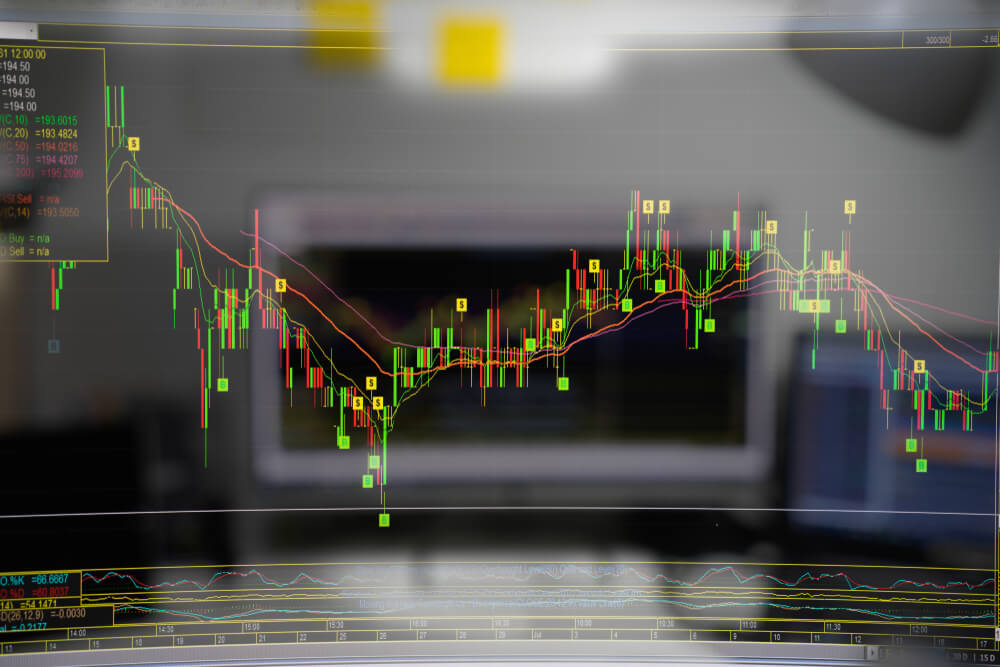
How to Calculate Drawdown: A Comprehensive Guide for Traders
Every trader learns that patience is crucial in the market, but too much patience can be a drawback. It’s important to recognize when to stop, which makes analyzing drawdowns essential. But what drawdowns are? And how to calculate drawdown?
What is the Definition of Maximum Drawdown?
The definition is simple: it is the maximum loss from a peak to a trough of a portfolio, before a new peak is attained. It’s an indicator used by investors to gauge the risk in an investment decision. Maximum drawdown allows traders and investors to understand how much their portfolio could decline during periods of poor performance.
Maximum Drawdown (MDD) Explained
Before we see how to calculate drawdown using the formula, let’s see what it exactly is. Maximum Drawdown (MDD) measures the largest single drop from peak to trough in the value of an investment portfolio, before a new peak achieves.
It helps investors understand the potential risk in a financial product. MDD is crucial for assessing risk management and capital preservation strategies.
A drawdown measures the decline in your investment from its highest to its lowest point. For example, if you invest $100,000 in tech stocks and your account grows to $120,000 before falling to $90,000, your drawdown is $30,000.
This drawdown isn’t calculated from your initial investment but from the peak value. You can express drawdown in dollars or as a percentage. Understanding this helps manage risks, especially in volatile markets like tech stocks.
How to Calculate Drawdown ?
Calculating MDD involves tracking the historical peaks of your investment and recording the subsequent largest drop from these peaks.
The formula for maximum drawdown is:
MDD = (Trough Value — Peak Value) / Peak Value
Calculation Example
Assume you start with an investment portfolio worth $500,000. Over time, it grows to $750,000, then plummets to $400,000 during a severe bear market. It recovers to $600,000, but falls again to $350,000. Eventually, it more than doubled to $800,000. The maximum drawdown in this scenario is the drop from $750,000 to $350,000.
The maximum drawdown in this case is
$350,000−750,000 / $750,000 = −53.33%
The maximum drawdown (MDD) is -53.33%, calculated from an initial peak of $750,000 to a low of $350,000. Note these points:
We use the initial peak of $750,000 to calculate MDD. We do not consider the interim peak of $600,000, as it does not set a new high.
Similarly, we exclude the new peak of $800,000 because the drawdown started from the $750,000 level. In calculating MDD, we consider the lowest portfolio value of $350,000 reached before a new peak forms, rather than just the initial drop to $400,000.
Managing maximum drawdown
Every wise investor sets a maximum drawdown limit for their portfolio. When nearing this limit, they can take steps to safeguard their investments.
These steps might include altering the investment strategy, lowering the stakes, tightening stop losses, or avoiding volatile assets.
For example, a forex trader with a 20% maximum drawdown might reduce their trading size or steer clear of risky assets if the drawdown approaches 15%.
In banking, the concept of drawdown also applies to credit, such as mortgages. Borrowers can choose to use all or part of their approved mortgage amount. Drawing the full amount means owing more in interest and fees. By borrowing less, they reduce their debt and overall financial risk.
Managing drawdown involves setting limits and diversifying investments. It’s crucial for risk management in both investing and borrowing.
Good investments should still yield a favorable return despite the risks of drawdown, applicable across various asset types and lending scenarios.
Drawdowns are a normal aspect of trading

To succeed as a forex trader, you need a trading plan that helps you handle large losses. This plan should include risk management rules.
Always risk only a small percentage of your “trading bankroll.” This way, you can get through your losing streaks. If you follow strict money management rules, you will act like the casino, and in the long run, you will always win.
Finally, understanding how to calculate drawdown is essential for anyone involved in trading or investing. It helps in making informed investment decisions and plays a crucial role in strategies aimed at capital preservation.
What is a good drawdown?
A good drawdown varies based on individual risk tolerance. Aggressive traders might accept higher drawdowns, while conservative investors prefer lower ones. Many recommend keeping drawdowns below 20% for peace of mind and capital protection.
Difference between drawdown in trading and banking?
In trading, drawdown measures the decline from the peak to the lowest equity value in your account over a period. It shows the risk level. In banking, drawdown means using parts or all of a credit line, indicating your liability level.
How can you reduce your drawdown?
To reduce drawdown, first identify your risk tolerance. Diversify your portfolio to stabilize it. Use lower leverage, especially in markets like CFDs, to minimize loss magnification. Holding positions for shorter periods can reduce market risk exposure. Employing risk control tools like stop losses and take profits can also help manage and reduce drawdowns.




